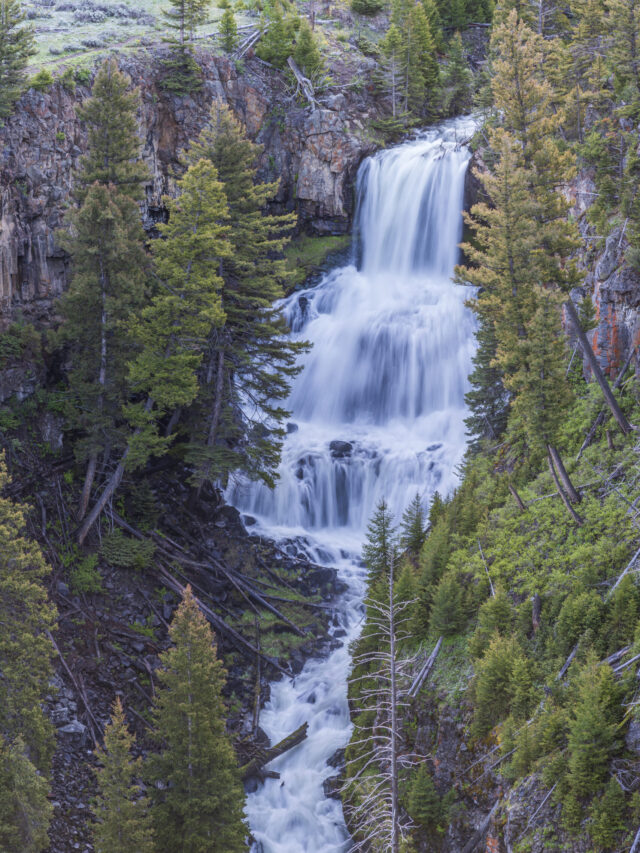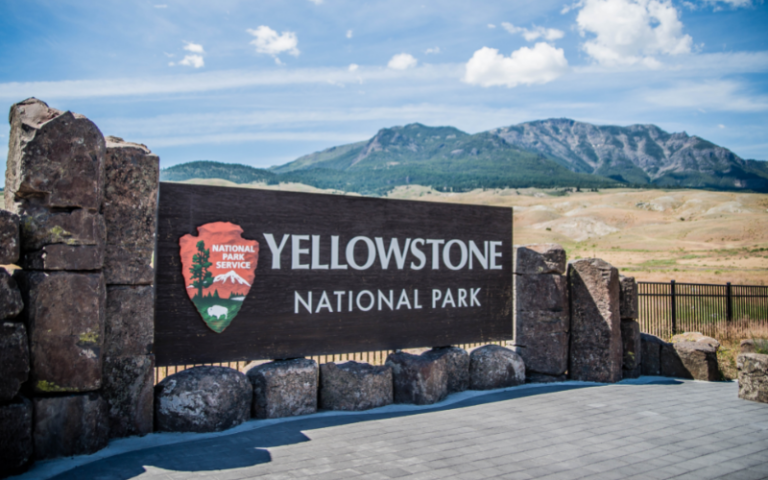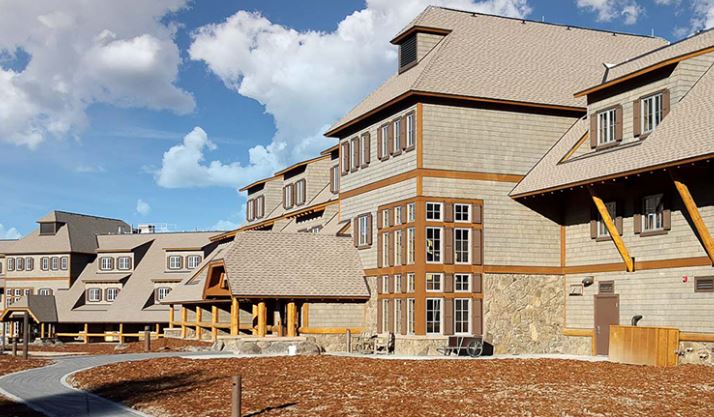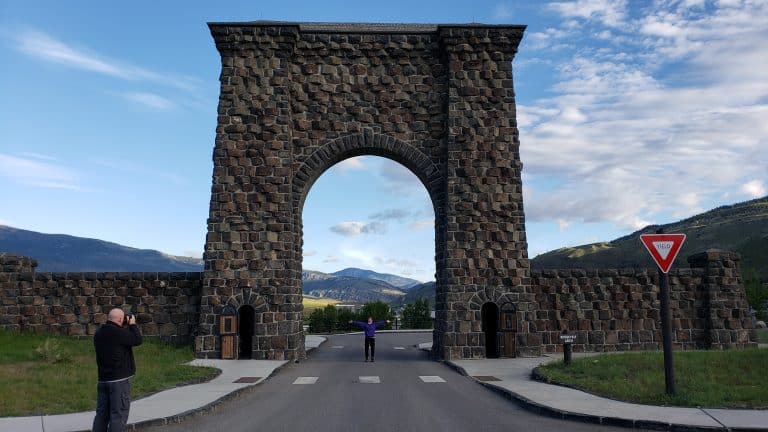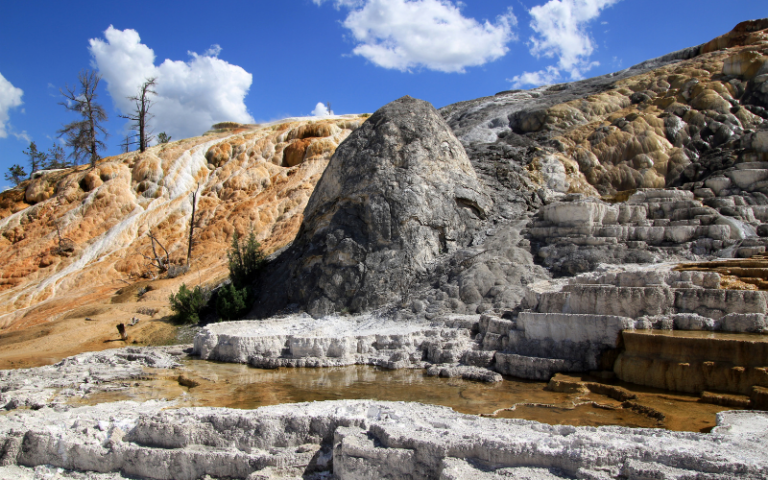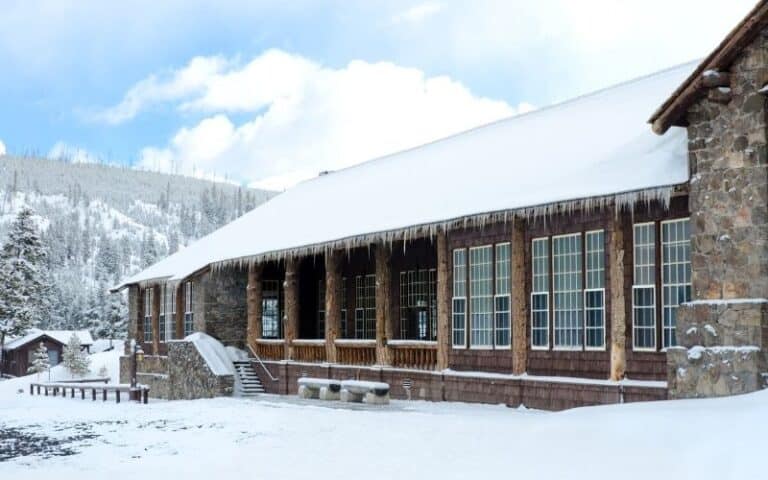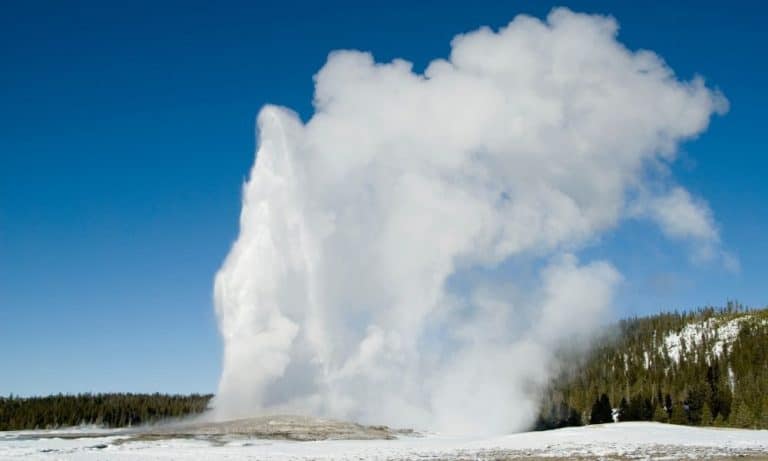20 Fun Yellowstone National Park Facts
Located in Wyoming and Montana, Yellowstone boasts breathtaking views of mountains, valleys, rivers, geysers and hot springs. In this article, we will take a look at some fascinating Yellowstone National Park facts that you may not have known before: location, history, geology, and weather!
Use this Yellowstone National Park travel guide to learn more about the park before you visit.
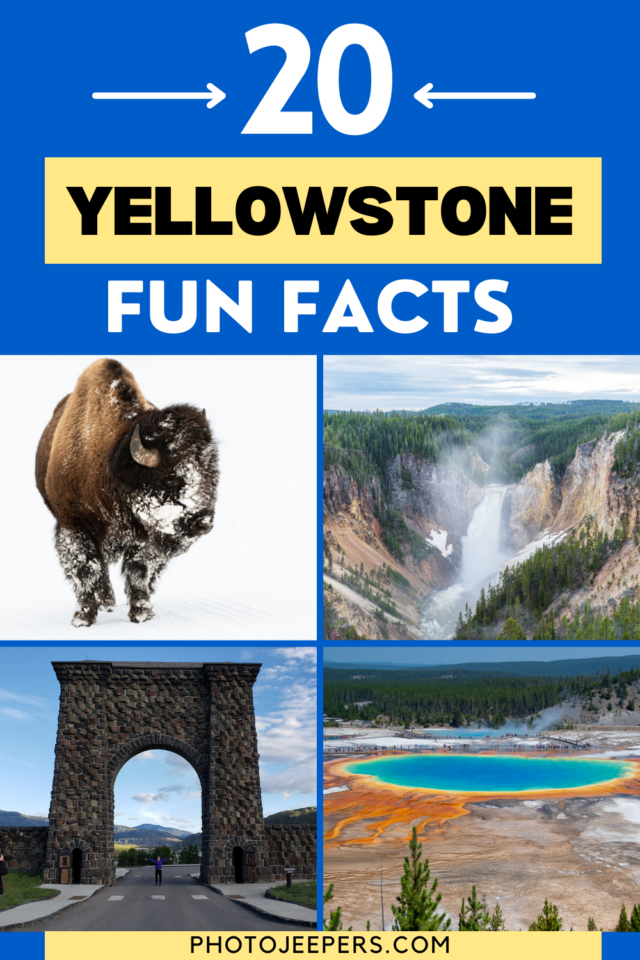
We also share important things to know to help you plan your Grand Teton vacation: what to pack, things to do, and where to say.
Use our Yellowstone National Park Packing List to make sure you have the right clothing and gear for visiting any time of year! Grab your free printable packing checklist by clicking the image below!
This site contains affiliate links which means WE may receive commissions for purchases made through these links. We only provide links to products we actually use and/or wholeheartedly recommend! As an Amazon Associate, we earn from qualifying purchases. Read the full Disclosure Policy.
A Photo Tour of the Yellowstone Southern Loop
Take a visual tour through the south loop of Yellowstone National Park to see the wildlife, waterfalls, geysers, and landscapes you’ll find in this part of the park!
Yellowstone National Park Facts
Before visiting any park, we recommend learning a few facts about US National Parks before your trip.
Yellowstone’s otherworldly features and abundant wildlife amazed early explorers. These features, such as its thermal features, canyons, and waterfalls, are due to the park’s location atop a super volcano.
The wildlife of Yellowstone includes grizzly bears, wolves, bison, and elk. Its unique geothermal features make it one of the most popular national parks in the US.
There are a variety of Yellowstone National Park Activities to enjoy late spring through early fall: scenic drives, hiking, backpacking, camping, fishing, and more!
In the winter you can enjoy snow activities like snowshoeing, cross country skiing, and snowmobiling.
Here are facts about Grand Teton National Park that you might not have known! These facts are great for brushing up on your park knowledge or preparing for an upcoming trip.
Basics About Yellowstone National Park
First, let’s start with the basics of Yellowstone:
- Location: Northwest Wyoming (96%), Southwest Montana (3%) Northeast Idaho (1%)
- Date it Became a National Park: March 1, 1872
- Acreage: 3472 Square Miles – About 5% covered by water; 15% by grassland; and 80% by forests
- Number of Visitors: Over 3.3 Million Visitors in 2022
- Highest Elevation: Eagle Peak (11,358 feet)
- Lowest Elevation: Reese Creek (5,282 feet)
- Precipitation: Annual precipitation ranges from 10 inches at the north boundary to 80 inches in the southwest corner.
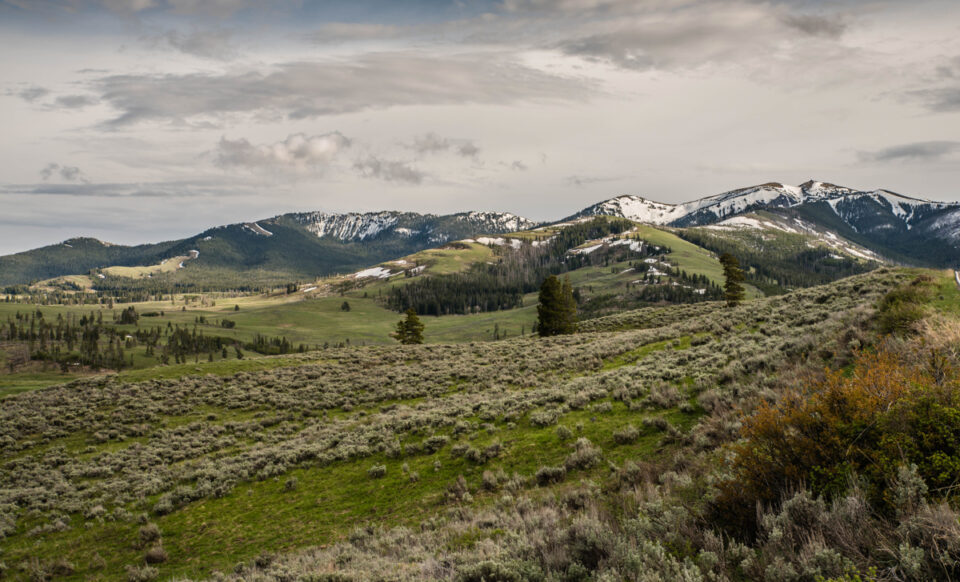
Yellowstone National Park is the First National Park in the United States
Yellowstone is known for its diverse landscape ranging from forests and canyons to geothermal features such as hot springs and geysers.
In order to save the area from private development, On March 1, 1872, President Ulysses S. Grant signed the Yellowstone National Park Protection Act into law. The world’s first national park was born.
The management of Yellowstone from 1872 through the early 1900s helped set the stage for the creation of an agency whose sole purpose was to manage the national parks. The National Park Service Organic Act was passed by Congress and approved by President Woodrow Wilson on August 25, 1916.
Yellowstone’s first rangers, which included veterans of Army service in the park, became responsible for Yellowstone in 1918. The park’s first superintendent under the new National Park Service was Horace M. Albright who established a management framework that guided administration of Yellowstone for decades.
Today, the park is a popular tourist destination, attracting over 4 million visitors annually.
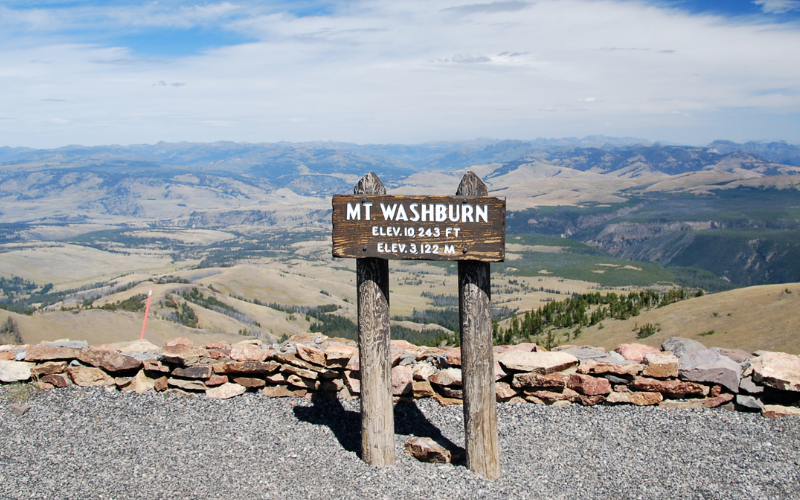
Yellowstone is Larger Than the Combined Area of Rhode Island and Delaware
Yellowstone encompasses 2,221,766 acres making it one of the largest national parks in the world and is home to a diverse array of wildlife. One thing to note is that no area figures measuring Yellowstone National Park have been scientifically verified. Efforts to confirm the park’s total area continue.
NASA astronaut and geologist Bob Christiansen discovered the massive caldera that Yellowstone sits on using high-altitude photos.
The caldera is a cauldron-like depression formed by the collapse of a volcano. It is estimated to be up to 45 miles wide. The caldera holds one of the world’s largest active volcanoes and is responsible for the hot springs and geysers that make Yellowstone National Park famous.
Yellowstone is divided into 2 main sections and 9 areas.
Yellowstone Southern Loop – There are three entrances to access the southern loop of Yellowstone: West (West Yellowstone), South (Grand Teton), and East (Cody). There are seven areas in the southern loop of Yellowstone: Madison, Old Faithful, Lake, West Thumb Geyser Basin, Grant Village, Canyon, Norris.
Yellowstone Northern Loop – There are two entrances with direct access to the north loop of Yellowstone: North (Gardiner) and Northeast (Cooke City). There are four areas in the northern loop of Yellowstone: Mammoth Hot Springs, Tower-Roosevelt, Canyon, Norris.
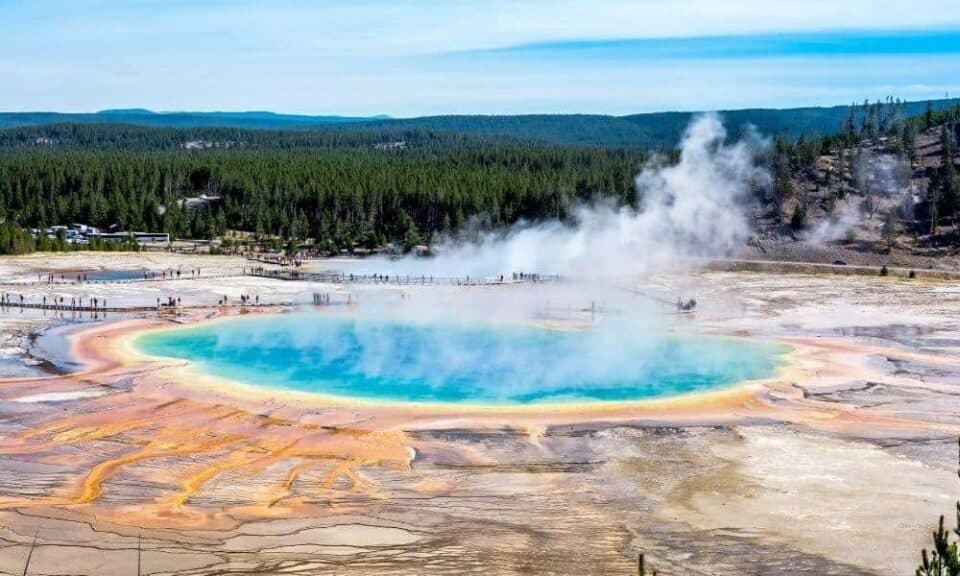
Yellowstone Contains More Than 10,000 Hydrothermal Features
There are four types of thermal features: geysers, hot springs, mud pots, and fumaroles. These features occur because the Yellowstone super volcano has a magma chamber below the surface. The hot water and steam which escape from these features give the area its characteristic smell.
Old Faithful Erupts Every 60 to 110 Minutes.
Old Faithful is the park’s most famous geyser and is known for its reasonably predictable eruptions. It is one of the most popular attractions in the park and can be seen from a large viewing area. Its eruptions usually last between one and five minutes. Henry Dana Washburn named the geyser Old Faithful on September 18, 1870.
In Terms of Size, Yellowstone’s Grand Prismatic is the Country’s Largest Hot Spring.
Grand Prismatic measures a whopping 370 feet in diameter and is located in the Midway Geyser Basin. Its vibrant colors are created by the bacteria that thrive in its extreme temperatures.
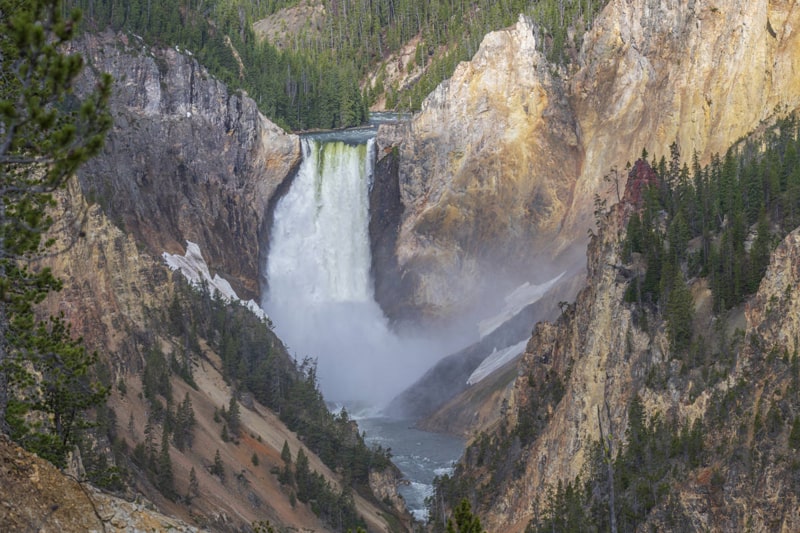
Yellowstone is Home to Approximately 290 Waterfalls
These are are 2.2 million acres where waterfalls are fed by the park’s rivers, streams, and lakes. The Yellowstone waterfalls range from small cascades to mighty falls, such as the Upper Falls of the Yellowstone River.
From late spring through early summer, visitors can experience the full beauty and power of these natural wonders as they come alive with melting snow and heavy rains.
The only downside to a Yellowstone vacation in the fall is the reduced water flow in the rivers, but they are still spectacular to see!
The only way to see most of the waterfalls in the winter is with guided tours on snowmobiles or snow coach tours. You CAN see Undine and Wraith falls on your own since the road from the North entrance to the Northeast entrance is open all year long!
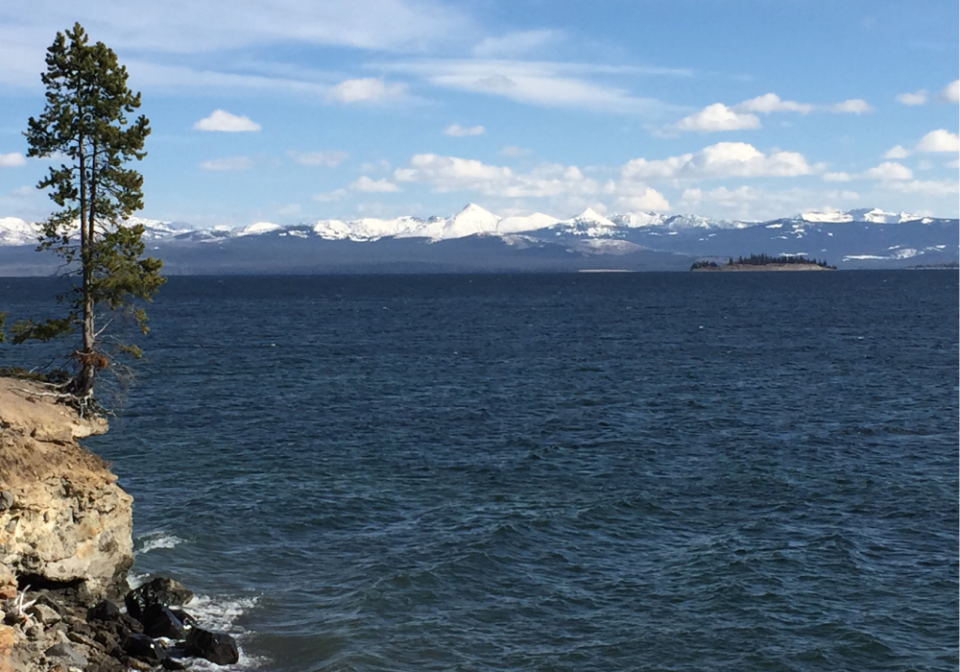
In North America, Yellowstone Lake is the Largest High-Elevation Lake
The lake is located in Wyoming and is the centerpiece of Yellowstone National Park. Yellowstone Lake sits above 7,000 feet and is roughly 20 miles long and 14 miles wide, with 141 miles of shoreline and a surface area of 132 square miles.
During Yellowstone’s winter, late December or early January, the lake freezes over completely with ice thicknesses varying from a few inches to more than two feet. The lake usually thaws in late May or early June.
Yellowstone Lake remains cold year-round, with an average water temperature of 41°F. Because of the extremely cold water, swimming is not recommended. Survival time is estimated to be only 20 to 30 minutes in water at this temperature.
Yellowstone Lake has the largest population of wild cutthroat trout in North America. Experts aren’t sure how a Pacific Ocean fish became trapped in a lake that drains to the Atlantic Ocean. Scientists now believe that Yellowstone Lake once drained to the Pacific Ocean via the Snake River, and that fish swam across the Continental Divide at Two Ocean Pass.
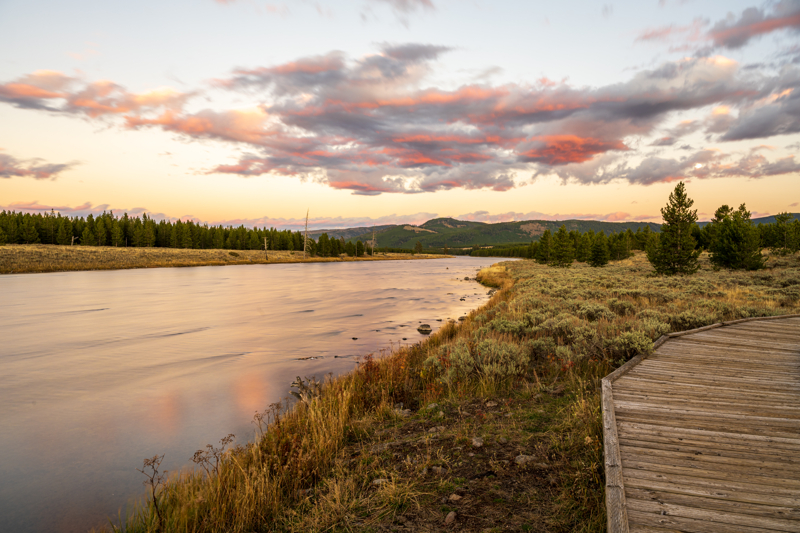
Yellowstone Has Approximately 1,000 Miles of Hiking Trails
The park is an ideal destination for hikers of all levels of experience. Hiking in Yellowstone allows visitors to experience its unique landscapes and wildlife up close. You’ll find a variety of Yellowstone hikes in all regions of Yellowstone:
- Old Faithful Area Day Hikes in Yellowstone
- Canyon Area Day Hikes at Yellowstone
- Mammoth Hot Springs Area Day Hikes in Yellowstone
- Lake and Fishing Bridge Area Day Hikes in Yellowstone
- Madison Area Day Hikes in Yellowstone
- Grant and West Thumb Area Day Hikes in Yellowstone
- Tower and Northeast Area Day Hikes in Yellowstone
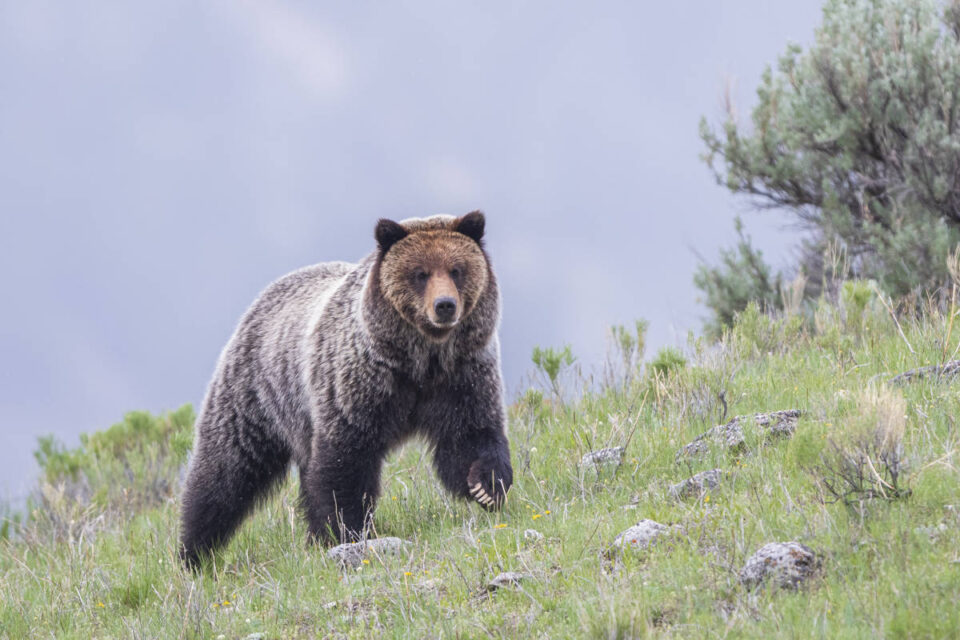
Yellowstone is Home to the Largest Concentration of Mammals in the Lower 48 States
The carnivores in Yellowstone all started out as meat-eaters, but many have evolved to be omnivores (consumers of plants and animals). Over a dozen carnivores can be found within the park:
- Badger
- Black Bear
- Bobcat
- Canada Lynx
- Cougar
- Coyote
- Gray Wolf
- Grizzly Bear
- Long-tailed Weasel
- Marten
- Red Fox
- River Otter
- Short-tailed Weasel
- Wolverine
The hooved plant-eaters you’ll see in Yellowstone:
- Bison
- Bighorn Sheep
- Elk
- Moose
- Mountain Goat
- Mule Deer
- Pronghorn
- White-tailed Deer
There are many more mammals in the park like beaver, chipmunk, marmot, snowshoe hare, and bats – just to name a few!
If you’re interested in seeing wildlife at Yellowstone, check out these resources:
- Best places to see Wildlife in Yellowstone National Park
- Best time to visit Yellowstone for wildlife
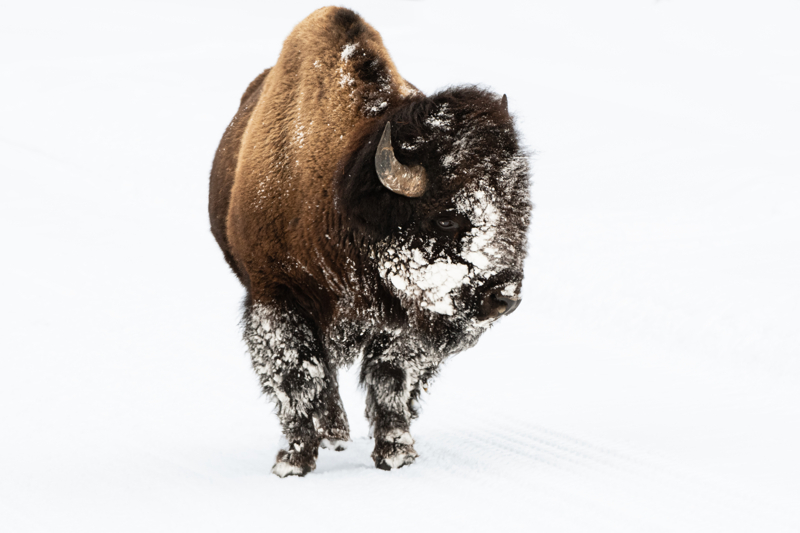
Yellowstone is Home to the Largest Bison Herd in the World
Yellowstone is the only place in the United States where bison have lived continuously since prehistoric times. The bison in Yellowstone comprise the nation’s largest bison population on public land.
The bison population lives and breeds in the central and northern regions of the park. The northern breeding herd congregates in the Lamar Valley and on adjacent plateaus for the breeding season. During the remainder of the year, these bison roam between Cooke City and the Paradise Valley north of Gardiner, Montana. The northern range is drier and warmer than the rest of the park, and generally has shallower snow than in the interior of the park.
The central breeding herd occupies the central plateau of the park, from the Pelican and Hayden Valleys to the Madison headwaters area in the west. Winters are often severe, with deep snows and temperatures reaching -44°F. Bison from the central herd congregate in the Hayden Valley for breeding. Most of these bison move among the Madison, Firehole, Hayden, and Pelican valleys during the rest of the year.
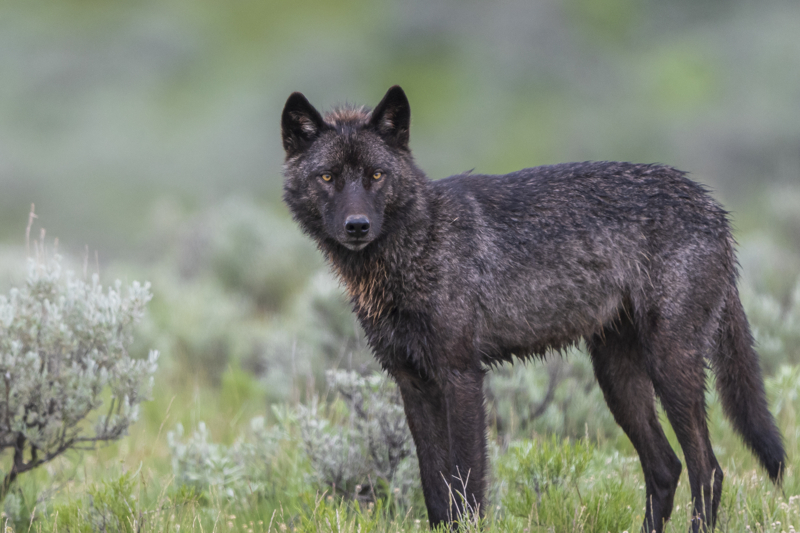
In 1995 Gray Wolves Returned to Yellowstone
In 1973, the U.S. Fish and Wildlife Service listed the grey wolf (Canis lupus) as an endangered species and designated Greater Yellowstone Ecosystem as one of three recovery areas. From 1995 to 1997, 41 wild wolves from Canada and northwest Montana were released in Yellowstone.
As of January 2023, there are at least 108 wolves in the park. Ten packs were noted. They inhabit most of the park, peak activity is at dawn and dusk. The northern range of Yellowstone is one of the best places in the world to watch wolves.
About half of the wolves in Yellowstone are dark black in color, with the other half mostly gray coats. Wolf size is about 26–36 inches tall at the shoulder, four to six feet long from nose to tail tip. Males weigh 100–130 pounds, females weigh 80–110 pounds. Average lifespan in the park is four to five years. Leading cause of death for wolves within the park is death by other wolves.
Wolves mate in February and give birth to an average of five pups in April after a gestation period of 63 days. Young wolves emerge from the den at 10–14 days. The pack remains at the den for three to ten weeks unless disturbed.
The wolves prey primarily on hoofed animals. In Yellowstone, 90% of winter diet is elk; summer prey consist of more deer and smaller mammals.
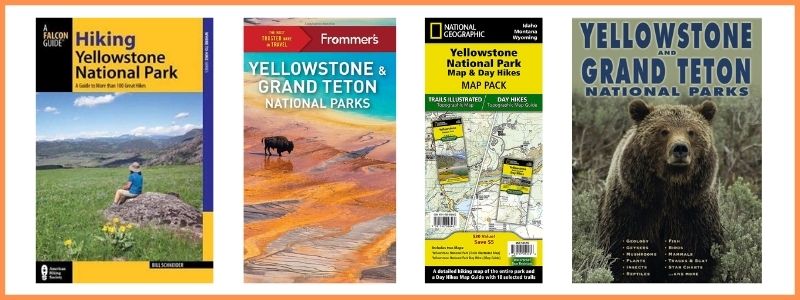
Tips for Visiting Yellowstone National Park
The time of year you visit Yellowstone will determine the things you can do. There are important things to know about visiting Yellowstone during each season: services available, road opening and closing dates, and things to do.
It’s also important to know the Yellowstone National Park weather for the times you’ll visit so you pack the right clothing and gear for sun, rain, snow, or even all three in one day!
For us, the best time to visit Yellowstone National Park is during one of the park’s shoulder seasons, which are from April through May and September through October. Not only do these months offer visitors more temperate weather, but these seasons also give guests a respite from the intense crowds that can overwhelm the park throughout July and August when most families are on summer vacation.
Additionally, you can further reduce your encounters with park crowds by visiting Yellowstone National Park during nonpeak hours, which are either before 9:00 am or after 3:00 pm.
Yellowstone Lodging
- Places to Stay at Yellowstone National Park
- Yellowstone Winter Lodging
- Yellowstone National Park Camping
- RV Parks Near Yellowstone National Park
Places to stay in West Yellowstone that we recommend:
- Holiday Inn, West Yellowstone
- ClubHouse Inn, West Yellowstone
- Kelly Inn, West Yellowstone
- → CHECK OUT more West Yellowstone hotels!
Places to stay in Gardiner that we recommend:
- Yellowstone Gateway Inn, Gardiner – full kitchen and comfy bed, one of our favorite places to stay!
- Park Hotel Yellowstone, Gardiner – charming place to stay and loved by guests!
- Absaroka Lodge, Gardiner – beautiful location with river views!
- → CHECK OUT more Gardiner hotels!
Places to stay in Cooke City or Silver Gate that we recommend:
- Sunny Log Home on the Creek, Silver Gate (VRBO) – the most AMAZING location with an awesome fireplace and comfy bed!
- High Country Motel and Cabins – local owners who love what they do, and make you feel so welcome!
- Rent an RV – have it dropped off at your vacation destination!



